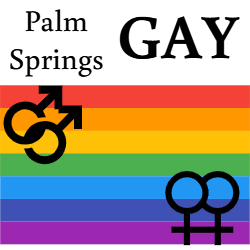One of the first gay rights activism sites is officially the new landmark of New York City.
Julius’s bar, in the heart of Manhattan’s Greenwich Village neighborhood, received the official designation Tuesday, following a vote by the city’s Landmarks Preservation Commission.
Located at 159 West 10th St., a short walk from fellow historic Stonewall Inn gay bar, Julius’ has been open since 1860. It began attracting gay patrons in the mid-20th century and, according to non-profit conservation group Village Preservation, is the oldest existing gay bar in the city. It was added to the National Register of Historic Places in 2016 for its prominence to the gay rights movement.
Village Preservation called Tuesday’s news the culmination of a decade-long campaign to recognize one of the first planned acts of civil disobedience in the fight for LGBTQ rights, three years before the iconic 1969 Stonewall uprising.
In the mid-1960s, gay rights activists frustrated with New York state’s ban on serving alcohol to gay customers came up with the idea of a “sip-in,” inspired at the time by “sit” protests -in” widely advertised at the Civil Rights lunch counter. They hoped that publicity for this type of rally would help galvanize gay rights advocates and potentially lead to greater community acceptance and decriminalization.
On April 21, 1966, a handful of gay men set out in midtown Manhattan, determined to get served despite the New York State Liquor Authority’s ban on serving drinks to known or suspected homosexuals. If they were refused service, they promised to cause a scene and file a human rights complaint with the city.
The first bar the group visited was notified of the rally and closed early. Eventually, the men landed at Julius’ — whose management at the time was having a hard time letting the venue become a gay bar, the group later said. Dick Leitsch, then president of the city chapter of the Mattachine Society, an early gay rights organization, let the bartender pour him and his friends drinks, before bluntly announcing they were gay.
“We’re homosexuals,” he told the bartender. “We are orderly, we intend to remain orderly, and we ask for assistance.”
The bartender refused them service, reached over and snatched their drinks. A photo of the moment went down in gay rights history.
“We wanted people to see who we are, what we are,” Leitsch told NBC News in 2017, shortly before her death the following year.
Sarah Carroll, chair of the New York City Landmarks Preservation Commission, said in a press release Tuesday that the protest “drew vital attention to unjust laws and practices” and “paved the way for future milestones in the fight for human rights.” LGBTQ+”.
The designation comes as New York City’s queer community grapples with a wave of unease following the deaths of two gay men earlier this year after they left gay bars in Hell’s Kitchen, as well as a series of robberies and assaults the New York City Police Department said. may be related to the other incidents.
In Tuesday’s release, Mayor Eric Adams said honoring a place where gay New Yorkers were once denied service “reinforces something that should already be clear: LGBTQ+ New Yorkers are welcome everywhere in our city.”
